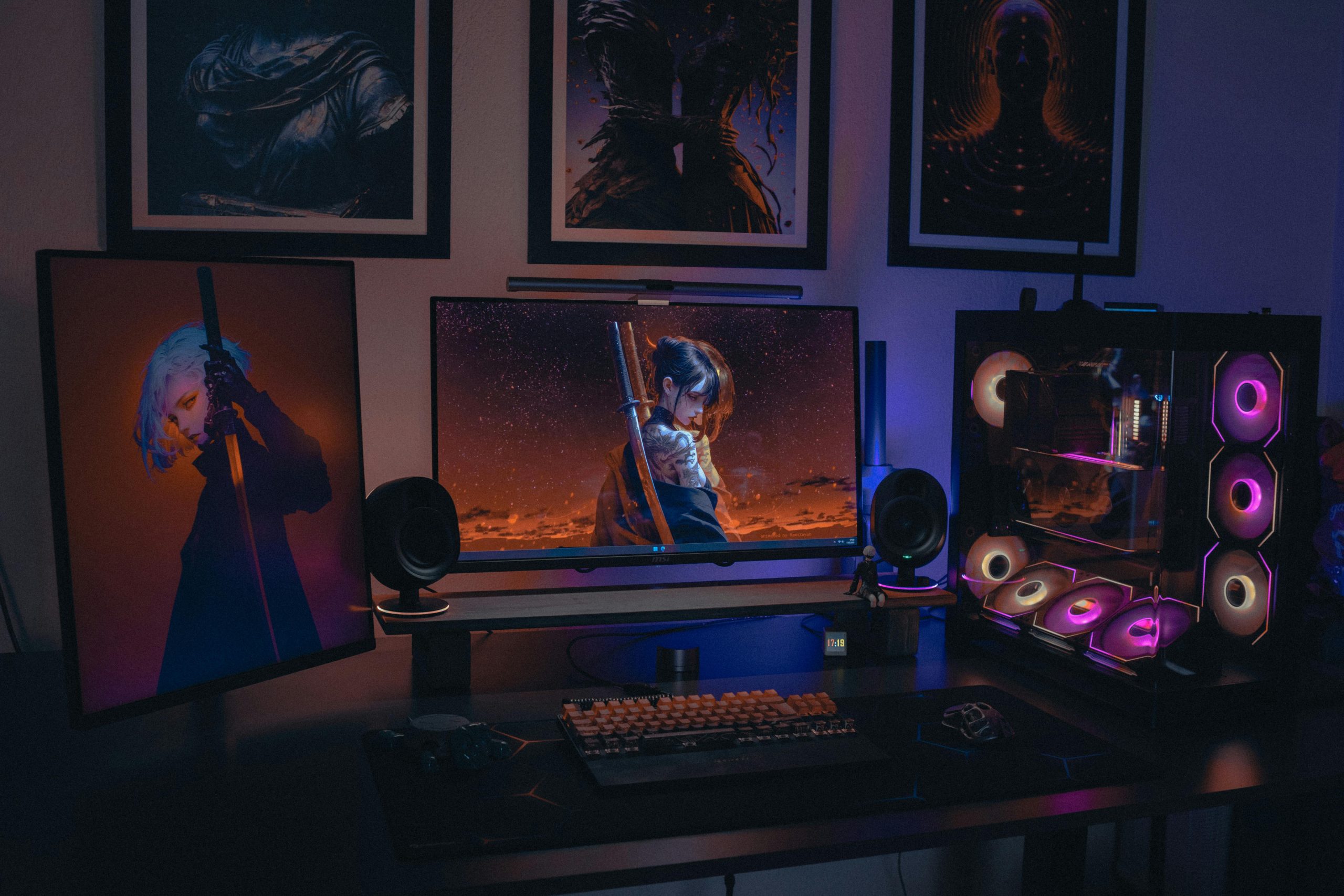Creating a Dual-Environment Setup for Desktop and Sim Racing Rig: A Guide to Efficient Space Utilization and Connectivity
Introduction
Transitioning to a new home often presents opportunities to optimize your workspace and gaming environment. If you’re a passionate gamer and a professional who requires a dedicated work area, balancing both in a single residence can be challenging. This guide explores how to effectively set up a high-performance gaming station in your basement while maintaining a productive office setup on the main floor, leveraging technology to streamline connectivity and minimize clutter.
Scenario Overview
Imagine residing in a house with a basement and an entry-level office. You wish to:
- Install a comprehensive sim racing rig in the basement, complete with multiple wide monitors, where aesthetics and noise are less of a concern.
- Maintain a functional workspace in your office with one or two monitors for regular work and gaming tasks.
- Optimize hardware usage by avoiding the expense and complexity of maintaining two powerful gaming PCs.
- Minimize noise and heat disturbance in the office environment.
Proposed Solution
The objective is to centralize your computing resources in the basement while allowing seamless access from your office setup. Here’s a strategic approach to achieve this:
-
Centralized High-Performance PC
-
Position a single, robust gaming PC in the basement, capable of handling sim racing, upcoming titles like Battlefield 6, and other demanding applications.
-
Connect this PC directly to your sim racing rig’s multiple wide monitors for an immersive experience.
-
Office Connectivity
-
In your office, set up 1-2 monitors (preferably 2K resolution or a wide display) which will serve as the primary workspace displays.
-
Use a reliable connection method to access the basement PC from the office, allowing you to switch seamlessly between the two setups without duplicating hardware.
-
Hardware and Connectivity Considerations
-
Utilize a high-quality KVM (Keyboard, Video, Mouse) switch designed for gaming setups to switch control and video signals between your office monitors and the basement PC.
- Alternatively, employ a powerful USB-C or Thunderbolt docking station or hub that supports video output and peripherals sharing over a single cable.
-
For peripherals such as keyboard, mouse, and audio devices, ensure they can be easily switched or shared via USB switchers or through software solutions.
-
Minimizing Noise and Heat
-
By placing the gaming PC in the basement, noise and heat generation are effectively isolated from your primary work environment.
- Use high-quality cooling solutions and proper ventilation in the basement
Share this content:



